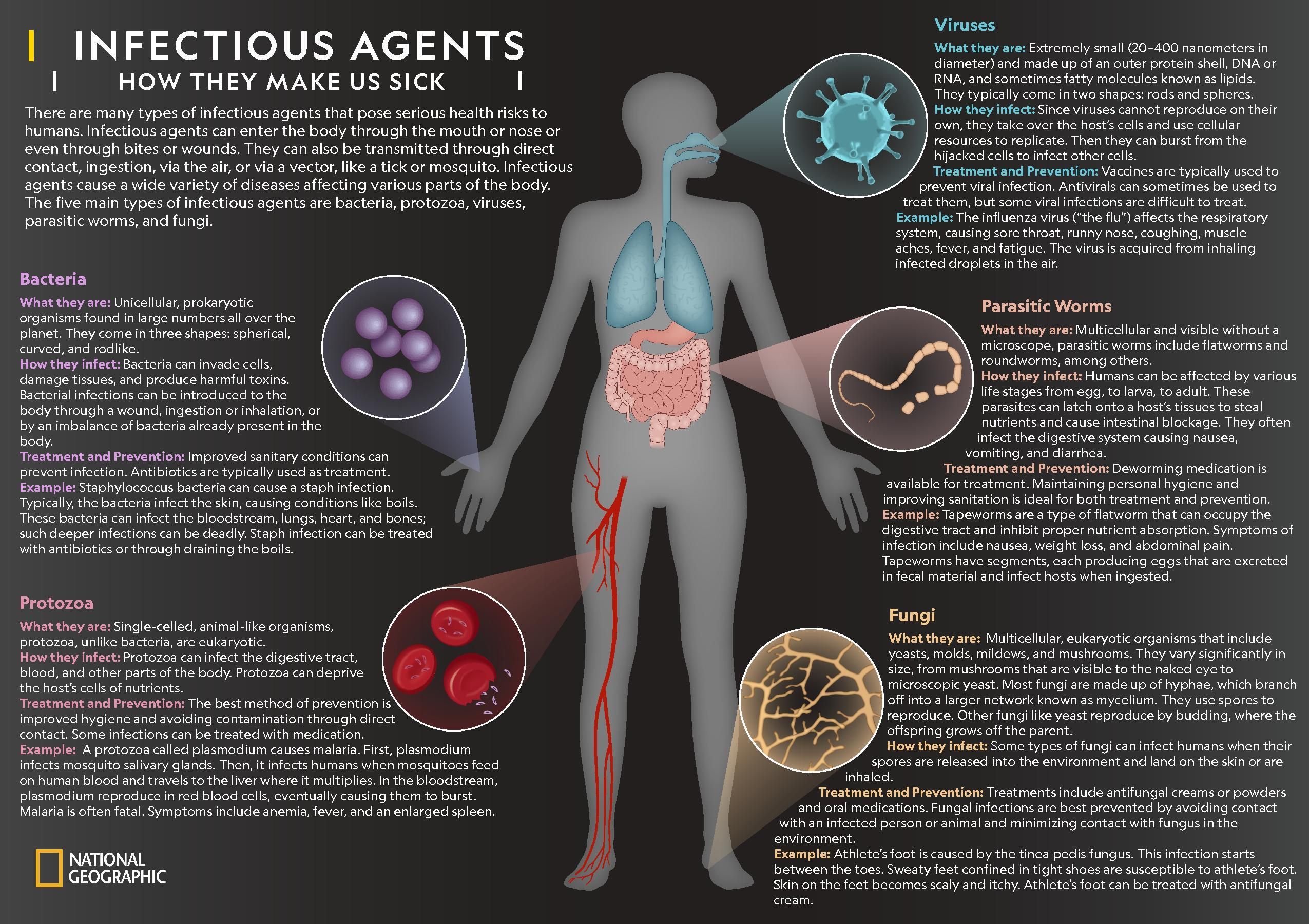Tissue or organ of origin ethnic and geographical origin age sex and general physiological condition. Cultured material containing large quantities of agent can undergo analyses to determine characteristics such as.

Classification Of Infectious Diseases Based On Their Causative Agents Download Scientific Diagram
Antimicrobial drugs can be divided into three main groups based on pharmacodynamic characteristics that affect bacterial clearance.

. Can be transmitted in virtually any setting. Clinicians should be aware that. Transmission has been documented in health-care settings where health-care workers HCWs.
Consequently the results of laboratory tests. If known the state of health or medical history of the donor should be reported along with the results of any tests of the donor for pathogenic agents. Infections can be caused by a wide range of.
Specifically for human diploid. Were the most frequently detected infectious agents found in 201 of animals. Describe the circumstances when respirators and surgical masks should be used.
Vaccines for Infectious Disease Indications Additional copies of this guidance are available from the Office of Communication Outreach and Development. Nawtaisong P Robinson MT Khammavong K Milavong P Rachlin A Dittrich S et al. Felis were also detected.
For human cell lines it is relevant to describe the following characteristics of the original donor. These diseases make up approximately 60 of all infectious diseases and an estimated 75 of recently emerging. Zoonotic Pathogens in Wildlife.
An infection is the invasion of an organisms body tissues by disease-causing agents their multiplication and the reaction of host tissues to the infectious agents and the toxins they produce. These findings suggest a substantial risk for exposure through handling and consumption of wild animal meat. Chapter 7 Tuberculosis Infection Control.
31 The first group consists of drugs that exhibit mainly time-dependent bactericidal action that has only a minimal relationship to drug concentrations that are greater than the MIC eg beta-lactam antibiotics and. Rickettsia typhi and R. Differences between the epidemiology of various infectious agents related to the age of the patient the season of the year accompanying signs and symptoms and the presence or absence of systemic disease are insufficient to establish a definitive etiologic diagnosis on clinical and epidemiologic grounds alone 101.
Zoonosis is the term used to describe any infectious disease that is naturally transmissible from animals to humans. An infectious disease also known as a transmissible disease or communicable disease is an illness resulting from an infection.

Infectious Agents National Geographic Society


0 Comments